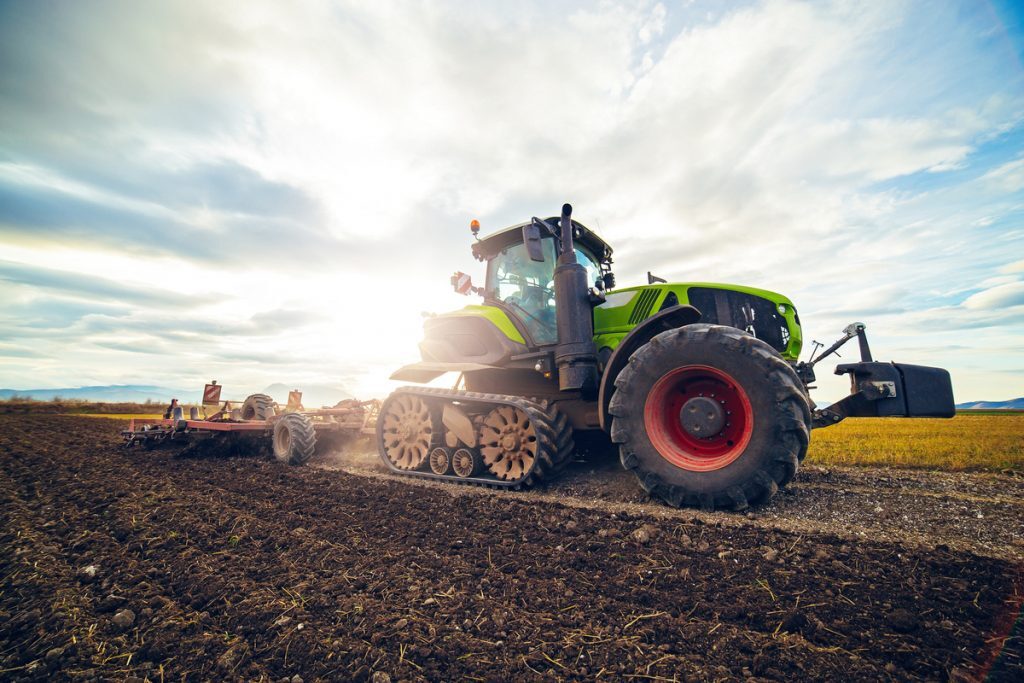From flatbeds to combines, to tractors, farm equipment simply requires a lot of care to remain functional and more importantly, safe to use.
Over the years, these tools have become more and more technologically advanced and budgets have become a bit tighter with rising costs. While maintaining and moving your farm equipment from one site to another is a common occurrence, it should be done the right way to ensure you always are deploying a well-maintained fleet.
In this brief overview, you’ll learn 7 tips for maintaining and moving your farm equipment.
1. Wash and detail tractors periodically
Keeping equipment maintained is critically important, including actually washing and rinsing your equipment from time to time. Having loose debris on machines like tractors can cause problems over time, including:
- Debris like small rocks or mud can get caught in equipment, causing corrosion or damage over time
- Fragments can also get caught in belts during movement, which could lead to slipping or breaking of the belt
Considering such costly problems, it is imperative to regularly wash and even detail farm equipment on a regular basis, using all the required equipment. While it doesn’t make sense to do this every day for every piece of equipment, this is a quick check that you can include in your periodic or daily inspection process.
Here are a few best practices to keep in mind when it’s time for your end of season wash routine:
- For combines and large equipment, generally power washers are a good option
- Ensure you avoid problem areas like engines
- Include periodic or annual washing as part of your preventative maintenance schedule
- Use a mobile wash company to clean your entire fleet
Especially in colder areas, washing off salt and grime can also help to prevent the costly side effects of corrosion.
2. Create and stick to a preventative maintenance schedule
Nothing keeps machines functioning efficiently and effectively like regular and comprehensive maintenance. It not only keeps them in good shape, but also helps to increase their lifespan and lowers the chances of breaking down when you need them most.
This measure is even more binding when working with heavy vehicles and construction machinery.
For effective maintenance, using a maintenance solution complete with the ability to set up service schedule is key. With a solution like Whip Around Maintain, you can configure how often each machine will undergo checks, and what is required.
This timetable should also include the exact number of maintenance tasks each piece of equipment should receive.
3. Eliminate manual paper processes
Inspecting your farm equipment is fundamental to ensure it’s in good condition, and safe for both operators and anyone who may encounter it.
One of the most time-consuming and ineffective tasks some farmers do is to manually complete every inspection or use paper work orders for every piece of machinery.
When should you inspect farm equipment?
When it comes to inspecting things like tractors, it’s really a matter of personal preference. As a general rule of thumb it’s a good idea to perform periodic inspections before both planting and harvesting seasons at a minimum.
With road vehicles, dump trucks, or any other vehicle in your fleet, these should be inspected more frequently. Daily inspections are a great idea for these types of vehicles, even if not engaged in interstate transport.
Since you likely have a broad swath of equipment to maintain, using a digital solution will make keeping track of everything much easier. If you are still using paper for either inspections or maintenance, check out our webinar Paper Inspections are History: 10 Reasons Why It’s Time to Go Digital.
4. Know the road rules
When it comes to actually transporting heavy farm equipment, one thing you have to know and follow is the rules of the road. This is a requirement that secures your machinery and also ensures safety for other motorists.
Here are 4 best practices to make known whenever onboarding new employees.
- Proper identification. Ensuring farm vehicles, such as trucks always display license plates in addition to the company name and (USDOT) United States Department of Transportation number on their power unit if applicable.
- Secure heavy equipment. Use tie-downs for heavy equipment when transporting to keep motorists safe
- Fulfill interstate requirements. All transport vehicles must meet the federal government definition of a commercial truck. If a truck travels through multiple states, it must display the USDOT number and company name on both sides of the truck cab. The display must be legible at a distance of 50 feet and in a color that contrasts with the vehicle.
- Observe interstate law. If your vehicle never leaves your state, the law dictates that it must display the USDOT number or the company name. However, this is dependent on the type of vehicle.
5. Communicate fuel best practices
Since diesel used for agricultural purposes is tax exempt and contains a red dye to indicate this, it’s important to educate employees on policies for refueling if you have fuel tanks on site. This can lead to hefty federal penalties if tax-exempt diesel is used in personal vehicles (for example).
While one of these small details, it’s important to communicate to all who are on staff to ensure that these policies are followed to avoid fines. As an example, the state of Oregon can issue fines of $10,000 per day if caught using dyed fuel in on-road vehicles.
It’s also a good idea to include fuel level checks as part of your daily pre-trip inspection.
Lost time is lost revenue, and while you don’t have to make daily inspections more involved than they need to be, ensuring fuel levels are monitored and documented as part of a pre or post trip inspection is key. This is another small detail that can keep equipment sidelined if no process is in place.
6. Review your farm equipment insurance

Despite all these efforts to keep all farm equipment fully functional, sometimes accidents or breakdowns happen. With this in mind, it’s important to review what your farm equipment covers (or doesn’t cover).
It’s important to periodically review your farm equipment policy. For most companies that insure farm equipment, you can opt for a blanket policy where everything is covered up to a certain amount, or choose to purchase insurance for tractors individually. It really depends on the size of your operation.
The insurance company will choose to cover the repair cost or get you a new machine where needed. However, to enjoy these services, you have to ensure that your policy is up-to-date. You also have to watch out for things that could change with your policy, such as:
- Deductibles
- Premiums and coverage
- What liability or damage to property may be covered
7. Start inspecting and maintaining vehicles and equipment digitally
No matter what type of equipment you are hauling from one site to another or transporting long distances, Whip Around can make your inspection process easier than ever before for any asset you have.
The Whip Around app helps companies save thousands each year in unnecessary breakdowns by:
- Ensuring managers know what vehicles or equipment have been inspected or need to be
- Receiving alerts whenever preventative maintenance (like oil changes) are due on vehicles
- Keeping vehicles subject to FMCSA inspection/DVIR requirements compliant with the law
To learn more, schedule a demo of Whip Around or start your free trial today.









